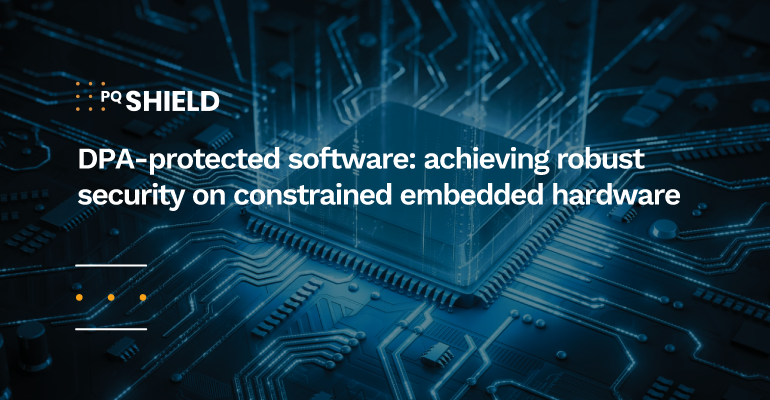The hidden threat to physical devices
For decades, we’ve secured digital infrastructure by building digital walls, using isolated systems, firewalls and VPNs to protect data in transit. But what if the deepest secret in our systems – encryption keys – were actually leaking into the physical world?
This is the cold reality of side-channel analysis. Each time an embedded device such as a factory floor microcontroller, smart access system or thermostat performs a calculation, it could be broadcasting tiny fluctuations, specifically in its power consumption. Rather like listening to the clicks of a locked steel door, with the right equipment, it’s possible for an attacker to read those signals, and fully expose the cryptographic key in minutes.
Combined with the increase in connectivity of industrial systems over the years, as well as the proliferation of new cyber threats, this problem is certainly one that needs addressing – and it’s a problem that’s not without its challenges. How do you protect against a side-channel attack when your devices are constrained by low processing power and minimal footprint? What happens to devices built today, such as PLCs, RTUs and smart locks, that are intended to run for 10 to 20 years?
DPA-hardened software
The solution is – highly specialized, optimizable DPA-hardened software, designed to mitigate physical attacks on deployed devices. It’s something that PQShield has spent a long time thinking about, and, as experts in the field, we believe our UltraPQ product suite has the potential to solve the problem, whether it’s ensuring devices remain either uncompromised, protected in the long term, or reliant on post-quantum secure key exchange across the network. And that network might have a particular attack surface.
For example, secure boot is a key area of vulnerability. A DPA attack (Differential Power Analysis) could monitor power fluctuations and extract the cryptographic keys that apply firmware updates, enabling malicious code to be inserted in the boot phase, or the startup process to be tampered with. These keys are typically stored on the device for the long-term, and could therefore be vulnerable for decades. Protections against physical attacks at this foundational level are essential.
Meanwhile, remote attestation allows one system to cryptographically verify the integrity and authenticity of another, over a network. As a critical component for establishing trust, it’s vital that the cryptographic keys exchanged are protected, allowing a monitoring system (for example, SCADA) to confidently verify that the device it’s contacting is running legitimate firmware. PQMicroLib, our solution for embedded systems, offers the option to include DPA protection built into the library’s core implementations. Using state-of-the-art techniques during the critical steps involved in connection between devices, it’s able to prevent an attacker from correlating power leakage to secret key data.
Avoiding ‘rip and replace’
These challenges have a hardware solution – Side-channel protected root of trust, deploying countermeasures against attacks like DPA. However, in the real-world of industrial control systems, the idea of ripping out legacy components and retrofitting quantum-ready replacements is likely to be a daunting if not infeasible task. That’s why we’ve developed not only root of trust hardware solutions, but also products such as PQMicroLib – PQC for brownfield systems, with software countermeasures. It’s a highly optimizable cryptographic library, and it’s tailored specifically for embedded systems with low footprint, running in as little as 13kb. It allows for secure key exchange and handles key and device provisioning, making it a great solution for devices that can’t be easily retrofitted with PQC-protected hardware.
Conclusion
At PQShield, we’re focused on protecting against the threats of tomorrow. The advent of quantum computing adds a new urgency to legacy systems, and the time to prepare is now. In addition, the regulatory landscape is changing, mandating further compliance with quantum-safe technology requirements. That’s why we’ve developed our UltraPQ suite for both hardware and software, deploying the latest NIST-standardized algorithms into IP solutions. However, even the most advanced PQC (post-quantum cryptography) is still potentially vulnerable to physical detection such as DPA, and often the problem is made more complex by the infrastructure, vulnerability, age and nature of the embedded systems deployed. That’s why we think PQMicroLib is such a powerful solution – providing effortless but powerful post-quantum protection in a minimal footprint, plus countermeasures in firmware that defend against side-channel attacks, keeping the attackers one further step away from our critical data and systems.

